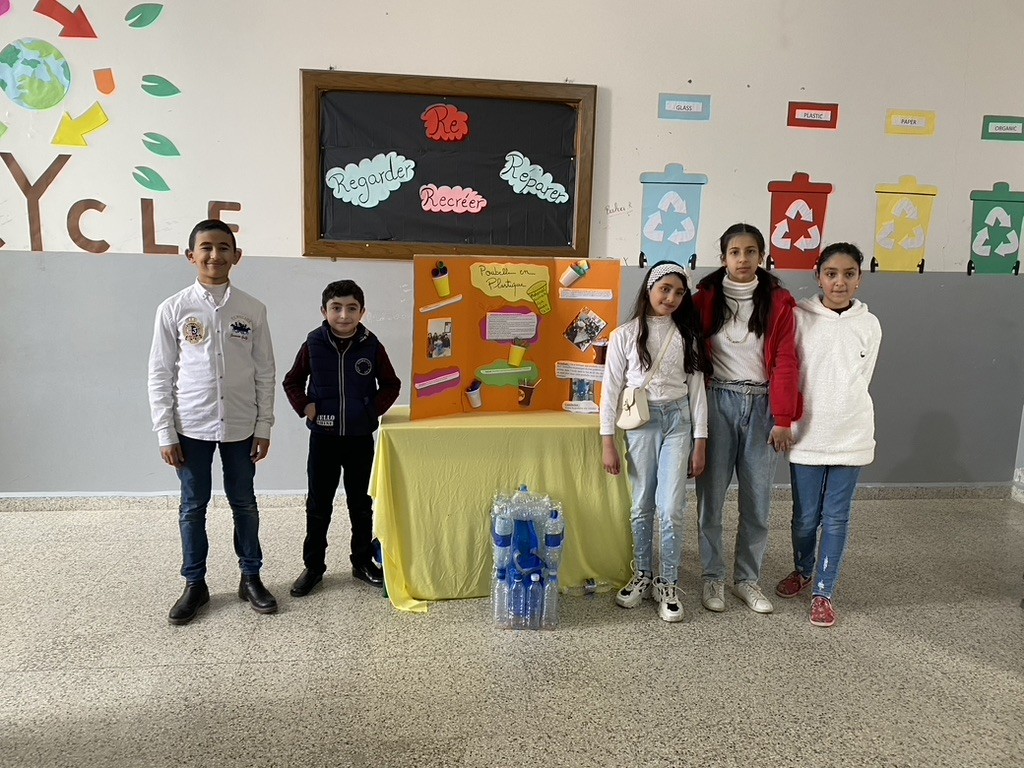Project Context
Located in Akkar, Merehbi International School is an institution that welcomes around 700 students.
The team had a main goal to create a Green School through creating a curriculum that emphasizes the importance of sustainable practices, inspiring the students to develop innovative solutions to environmental problems. An additional aim was to further integrate project-based learning across multiple subject areas to enhance the students’ abilities to think of, research, and present environmental solutions and innovations. In order to do so, they aspired to create an appropriate learning space that could allow the students to execute those projects and shifted the pedagogy within the classroom to become project based. As a result, the school community has worked on these two pathways leading to creating a mindset of environmental awareness and green practice through STEAM and other student-led projects.
Project Description
Designed to help students understand the impact of human actions on the environment, various subjects and activities took place throughout the green curriculum project.
Students from grades one to eight and 10 have participated in STEAM, environmental education, and utilized project-based learning.
The diversity of ages among the students has resulted in the development of a new generation of environmentally conscious citizens who possess the knowledge and ability to make informed decisions regarding sustainability and take steps towards preserving the planet. This sense of active citizenship aligns with nafda’s values and has been reflected throughout the project, creating a unique sense of empowerment.
Among the goals of the project was to develop the scientific, practical, technological, and autonomy capabilities for 200 students, reinforcing their skills of the 21st-century, including critical thinking, creativity, problem solving, and more.
On the curriculum level, the green revamp has started in classes from grades one to three, with Arabic and French language classes, revolving around energy conservation. As for the Science curriculum, the teachers collected highly regarded and age appropriate science books in English and translated them to French. They’ve done so to integrate scientific thinking as a method inside the classes, as they found it more prominent in those books, and appropriated them to fit their local context. In order to integrate technology into the curriculum, the school team utilized STEAM solutions and integrated a weekly STEAM lab visit.
Through that, the students have gained mechanical and electrical skills, while reinforcing their coding and digital ones.

Achievements to Date
- 200 students’ mechanical and electrical skills improved by an average of 45%.
- Students’ grades showed an increase in all scientific subjects.
- Students from grades three to eight achieved an average score of 80% on a critical thinking survey, by engaging in problem solving projects in their STEAM Lab, with a focus on greening the community.
- Students created a narrative around the ideal Green School and Green Community and successfully presented their projects and innovative solutions to their community and other nafda schools.
The Human Heartbeat
The project has strengthened social cohesion and promoted a sense of belonging and investment in the community. One of the main successful stories is related to the parents’ involvement and contribution. Their involvement has helped the children equip the STEAM Lab with reusable material, by reaching out to local businesses, organizations, and individuals for in-kind support. A major partnership was fostered between families and the school community, leading to better student outcomes and a more positive learning environment. The municipality has also helped, conducting a waste audit and a recycling program while partnering with local businesses, creating a sustainable future for the community. More parties were involved in the project, leading to growing a sense of pride and identity among community members who have shared a vision for the future that reflects their values and aspirations.
